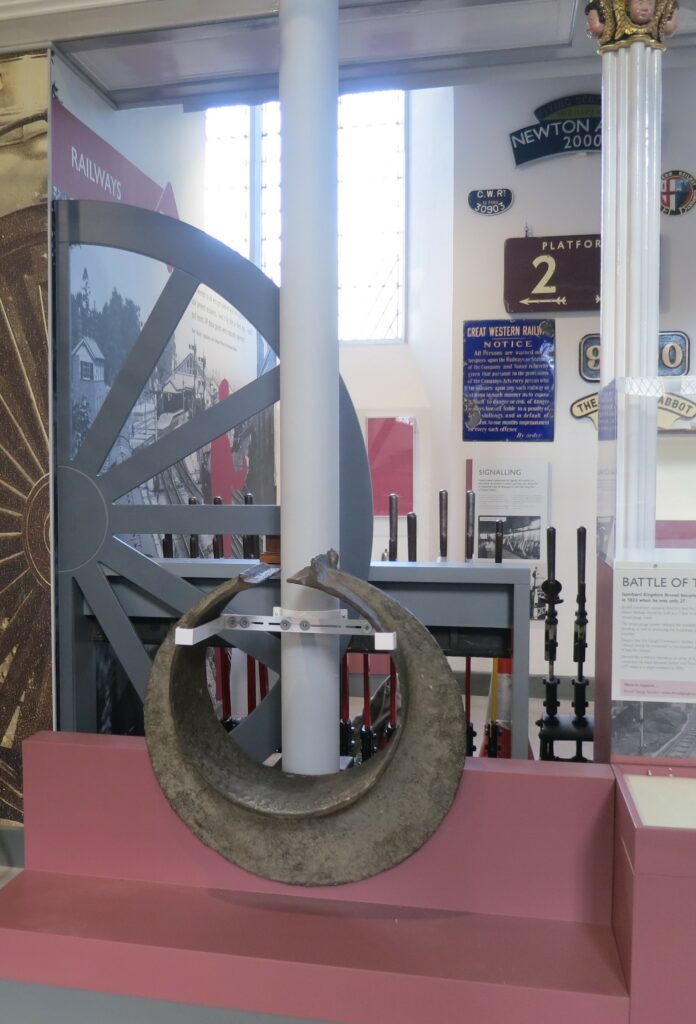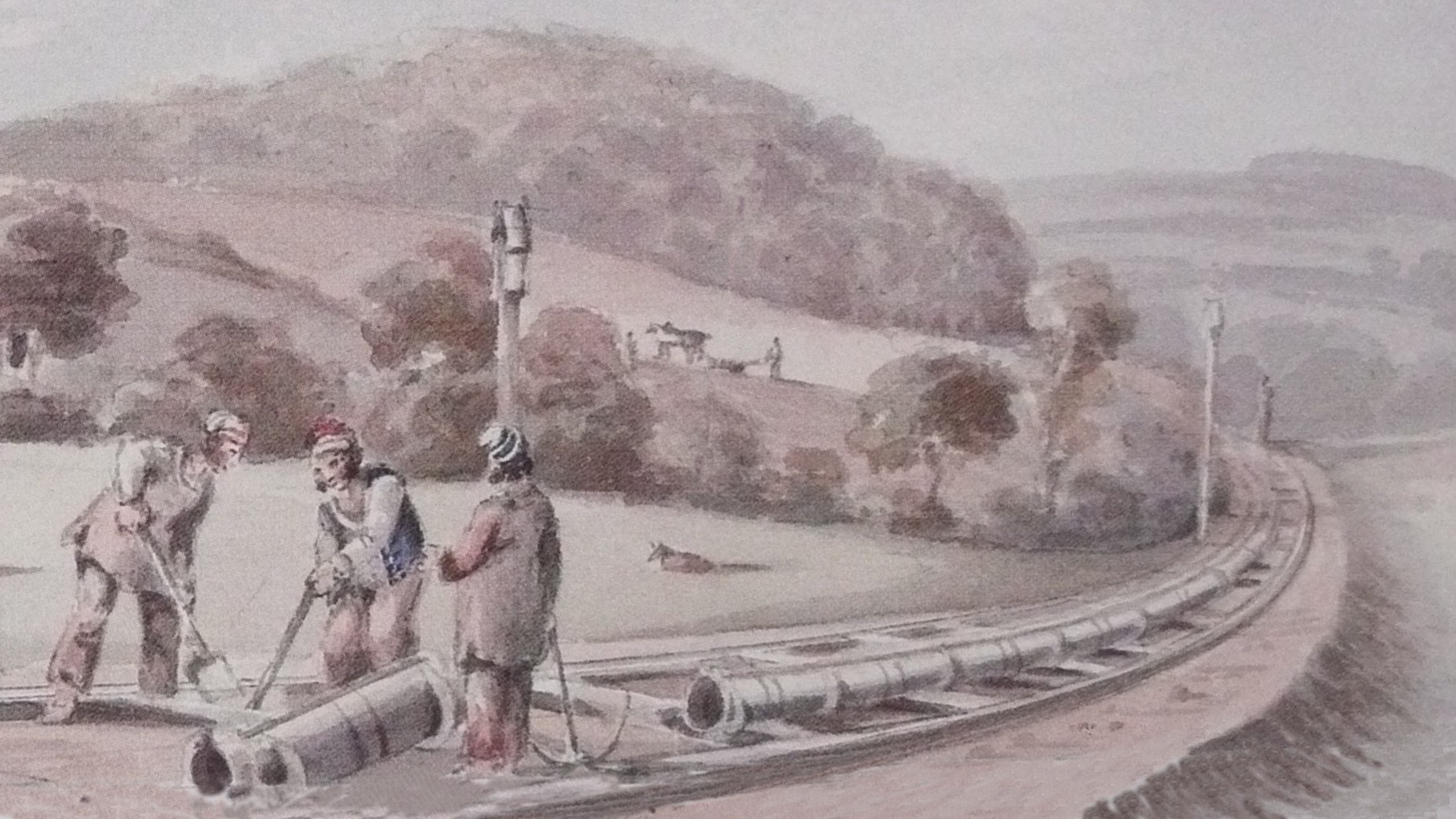
Atmospheric Railway
- by charlottee
- in Museum
- posted May 10, 2024
By Charlotte Edwards

We often think of the atmospheric railway which ran between Exeter and Newton Abbot as Brunel’s brainchild, but although he pioneered the Devon line, he did not come up with the idea of moving trains using the power of air himself.
The first vacuum was created in a laboratory in 1643, and by 1799 mechanical engineer George Medhurst raised the idea of using this discovery as a means of propulsion. It took until 1838 for a workable model to move weights using atmospheric pressure to be created. This patent was taken out by a group of shipwrights and engineers: Samuel Clegg, Jacob and Joseph Samuda.
Samuda and co used this patented idea to create a short length of working atmospheric railway to help transport stone in Ireland in 1844. This continued to operate for 10 years and was a popular novelty for passengers.
Isambard Kingdom Brunel visited Ireland and was impressed by what he saw and felt that this ingenious system could be added to the existing broad-gauge tracks in Devon by placing the required pipe between the tracks.
The atmospheric railway used a series of stationary steam engines situated in pumping stations to pump the air out from the pipe which ran beneath the trains. Beneath the first vehicle of the train was a piston which fitted snugly into the pipe through a slit sealed with leather. Prior to the train leaving, the air was pumped out of the pipe ahead of the train and the train was propelled forward by the force of the atmospheric pressure against the piston.
This method meant no noisy and dirty engines attached to the trains themselves, which was seen as a huge boon, however they had many less favourable features: stopping and starting was a tricky manoeuvre and trains often overshot the station. In order to maintain a vacuum, the pipe had to be sealed with a leather flap. To keep this flexible in the sea air it was lubricated with animal fat which proved to be a tasty treat for vermin who damaged the seal by chewing on it. It was also difficult for the pumping stations to keep in contact with each other to enable the trains to change direction when needed.
Devon’s first atmospheric train ran in September 1847 between Exeter and Teignmouth and the system was extended to Newton Abbot in February 1848. Sadly, the limitations of the technology proved to make it extremely unwieldy and expensive to run, so although for a time it operated reasonably efficiently (nine passenger trains a day at speeds up to 70 mph), on 10th September 1848 all atmospheric trains ceased to run and the line returned to being solely serviced by normal steam engines.





